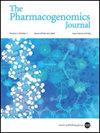Exploring pharmacogenetic factors influencing hydroxyurea response in tanzanian sickle cell disease patients: a genomic medicine approach
IF 2.9
3区 医学
Q2 GENETICS & HEREDITY
引用次数: 0
Abstract
In sub-Saharan Africa, sickle cell disease (SCD) remains a significant public health challenge. Despite the discovery of SCD over a century ago, progress in developing and accessing effective treatments has been limited. Hydroxyurea is the primary drug used for managing SCD and associated with improving clinical outcomes. However, up to 30% of patients do not respond to hydroxyurea, likely due to genetic factors. This study involved 148 individuals with SCD investigated the association of hydroxyurea response with genetic variants across 13 loci associated with HbF synthesis and drug metabolism, focusing on MYB, HBB, HBG1, HBG2, BCL11A, KLF10, HAO2, NOS1, ARG2, SAR1A, CYP2C9, and CYP2E1. Significant associations with hydroxyurea response were identified in CYP2C9, CYP2E1, KLF10, BCL11A, ARG2, HBG1, SAR1A, MYB, and NOS1 loci. Furthermore, pathway enrichment and gene-gene interaction analyses provide deeper insights into the genetic mechanisms underlying hydroxyurea treatment response, highlighting potential avenues for personalized therapy in SCD management.

探索影响坦桑尼亚镰状细胞病患者羟基脲反应的药物遗传因素:基因组医学方法。
在撒哈拉以南非洲,镰状细胞病(SCD)仍然是一个重大的公共卫生挑战。尽管在一个多世纪前发现了SCD,但在开发和获得有效治疗方面的进展有限。羟基脲是治疗SCD的主要药物,与改善临床结果有关。然而,高达30%的患者对羟基脲没有反应,可能是由于遗传因素。本研究涉及148名SCD患者,研究了羟基脲反应与13个与HbF合成和药物代谢相关的基因位点的遗传变异的关系,重点是MYB、HBB、HBG1、HBG2、BCL11A、KLF10、HAO2、NOS1、ARG2、SAR1A、CYP2C9和CYP2E1。CYP2C9、CYP2E1、KLF10、BCL11A、ARG2、HBG1、SAR1A、MYB和NOS1位点与羟基脲反应有显著相关性。此外,途径富集和基因-基因相互作用分析为羟基脲治疗反应的遗传机制提供了更深入的见解,强调了SCD治疗中个性化治疗的潜在途径。
本文章由计算机程序翻译,如有差异,请以英文原文为准。
求助全文
约1分钟内获得全文
求助全文
来源期刊

Pharmacogenomics Journal
医学-药学
CiteScore
7.20
自引率
0.00%
发文量
35
审稿时长
6-12 weeks
期刊介绍:
The Pharmacogenomics Journal is a print and electronic journal, which is dedicated to the rapid publication of original research on pharmacogenomics and its clinical applications.
Key areas of coverage include:
Personalized medicine
Effects of genetic variability on drug toxicity and efficacy
Identification and functional characterization of polymorphisms relevant to drug action
Pharmacodynamic and pharmacokinetic variations and drug efficacy
Integration of new developments in the genome project and proteomics into clinical medicine, pharmacology, and therapeutics
Clinical applications of genomic science
Identification of novel genomic targets for drug development
Potential benefits of pharmacogenomics.
 求助内容:
求助内容: 应助结果提醒方式:
应助结果提醒方式:


